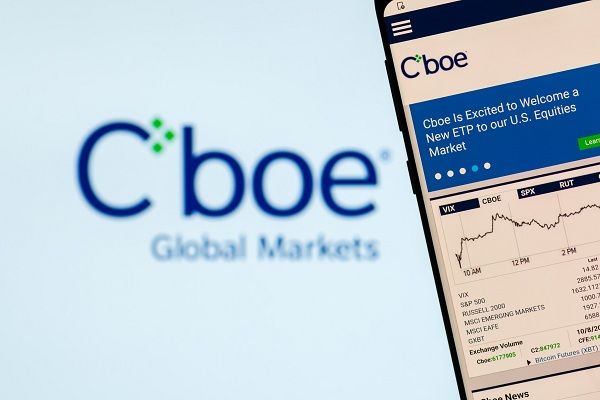Warren Buffett has long recommended investing in companies with a substantial moat around them. Over the years, he has succeeded in this by acquiring companies like Apple, Moody’s, Coca-Cola, and American Express.
Companies like Cboe Markets (CBOE), Nasdaq (NDAQ), and Intercontinental Exchange (ICE) fit the bill as quality companies with big moats and high margins. This explains why the three companies have done well over the years. NASDAQ shares have jumped by over 1,400% since 2010 while ICE and Cboe have risen by over 700%.
Intercontinental Exchange | ICE
Intercontinental Exchange is a name that many people have yet to hear, yet it is one of the most important companies in the United States.
ICE, as it is popularly known, is the parent company of the New York Stock Exchange (NYSE), ICE Futures Exchanges, ICE Clearinghouses, and IDC. It also owns Ellie Mae, BondPoint, and ICE Data Services.
The company’s revenue has grown substantially in the past few years. Its annual figure has jumped from over $5.2 billion in 2019 to over $7.9 billion in 2023. Most of its revenues comes from its exchanges followed by fixed income and data services, and mortgage technology.
Its exchange revenue is mostly in areas like energy, data and connectivity, cash equities, and financials.
ICE is a good investment for three main reasons. First, it has a moat in its key industries that is hard to penetrate. Besides, attempts to start new exchanges in the US have largely failed over the years.
Second, ICE is a high-margin business because it has a gross profit margin of 100% and an EBITDA margin of 60.65%. This means that it has more room to grow its margins over time.
Third, ICE has a strong record of growing its dividends over time. It has a dividend yield of 1.11% and a payout ratio of 30%. Also, it has a 5-year growth rate of 11%, higher than most companies.
The only risk for ICE stock is that it has become highly overbought. On the weekly chart, the stock has risen in the last 10 straight weeks, pushing the Relative Strength Index (RSI) to 80, its highest point in years. The two lines of the Stochastic Oscillator have also moved close to 100, meaning that it could have a slight pullback.
Nasdaq | NDAQ
Nasdaq is another company with a huge moat to consider. The company, together with the New York Stock Exchange, operates as a duopoly in the listing industry.
However, like the London Stock Exchange, it has expanded its business from listings to other areas.
Most of its revenue comes from the market services segment, which made over $883 million in quarterly revenues. It also makes money in its capital access platform ($481 million) and financial technology ($420 million).
Altogether, Nasdaq has grown its revenues from over $4.2 billion in 2018 to over $6.06 billion in 2023. It is also a high-margin business with gross margins of 665 and an EBITDA margin of 36%.
Nasdaq – and ICE – will benefit when the Federal Reserve starts to cut interest rates later this year as this could lead to a return of IPOs.
On the weekly chart, the stock has recently crossed the important resistance point at $69, its highest point in November 2021. Oscillators like the RSI and Stochastic have also risen to overbought. My base case is where Nasdaq stock retreats and retests the support at $69 and then resumes the bullish trend.
Cboe Global Markets
Cboe Global Markets is another high-cost company to consider. It is a leading fintech company that competes primarily with the Chicago Mercantile Exchange (CME).
Cboe provides various services like options trading, equities, futures, and forex. Its options business is done through Cboe, C2, BZX, and EDGX and accounts for the most of its revenue. In the last quarter, it made over $306 million.
Cboe’s other biggest business is North American equities, which made over $98.3 million followed by its Europe and Asia Pacific, which made over $54 million.
Cboe Global Markets revenue rose from over $2.49 billion to $3.7 billion in 2023. Like the other companies, it is also a high-margin firm with a gross profit margin of 52% and an EBITDA figure of 33.15%.
The weekly chart shows that the Cboe share price has soared from a low of $67.20 in 2020 to over $200. Most recently, the stock rose above $197, its highest level in February 2024. The stock has remained above all moving averages.
At the same time, the Relative Strength Index (RSI) and the Stochastic Oscillator have all moved to the overbought level. Therefore, the outlook for the stock is bullish, with the next point to watch being at $250.
The post CBOE, Nasdaq, and ICE: are these good blue-chip stocks to buy? appeared first on Invezz
